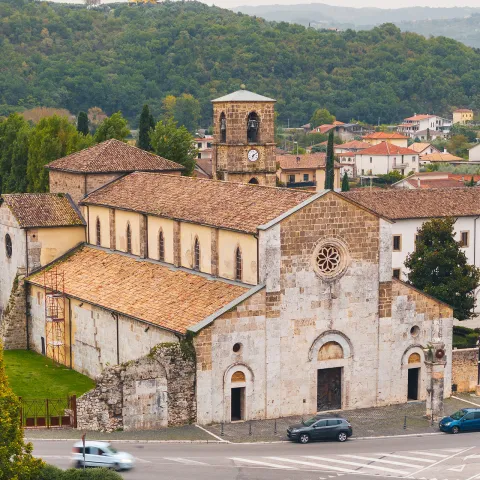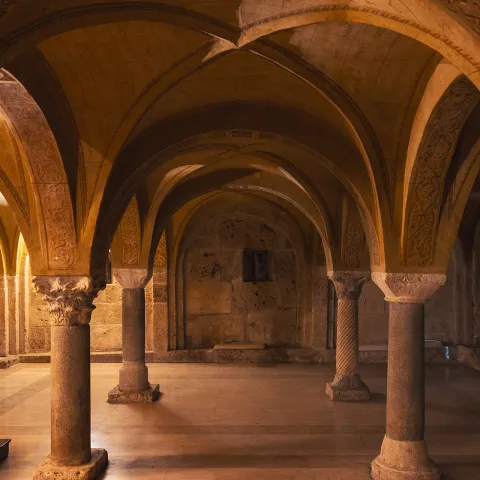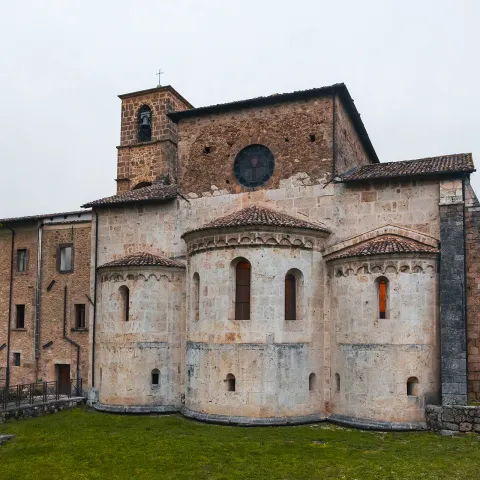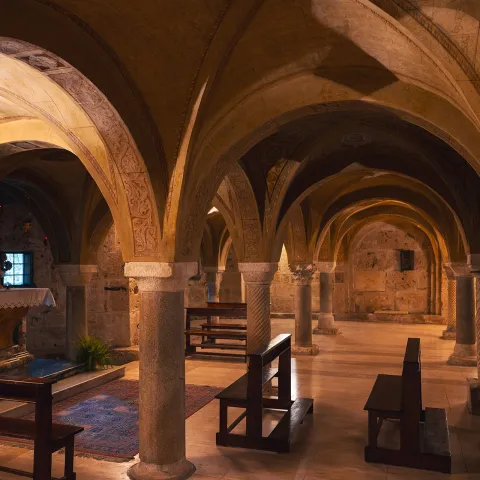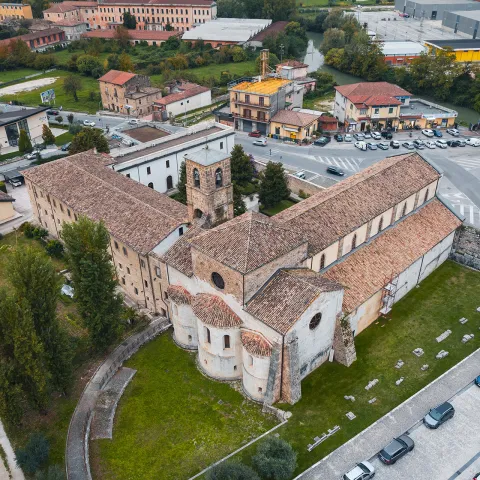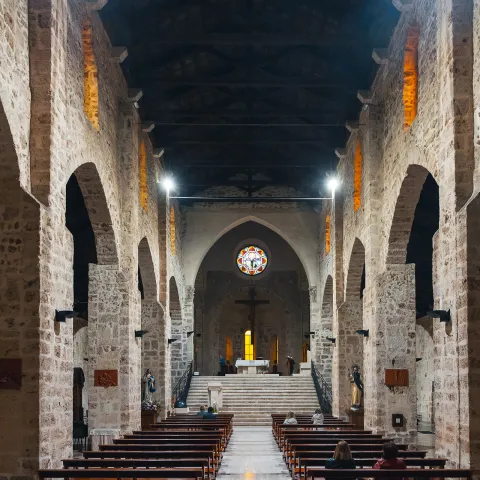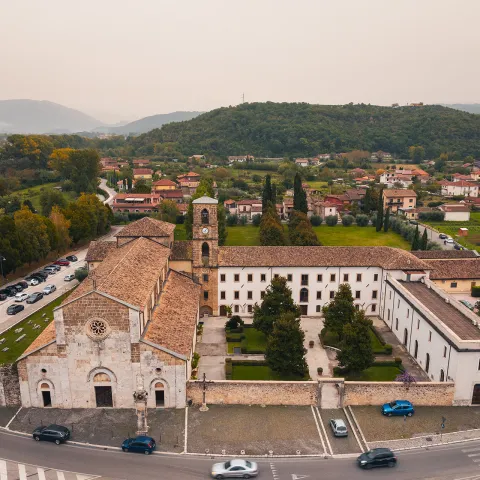Abbey of San Domenico
The abbey is named after the Benedictine monk Domenico di Foligno (951-1031), who founded it in 1011
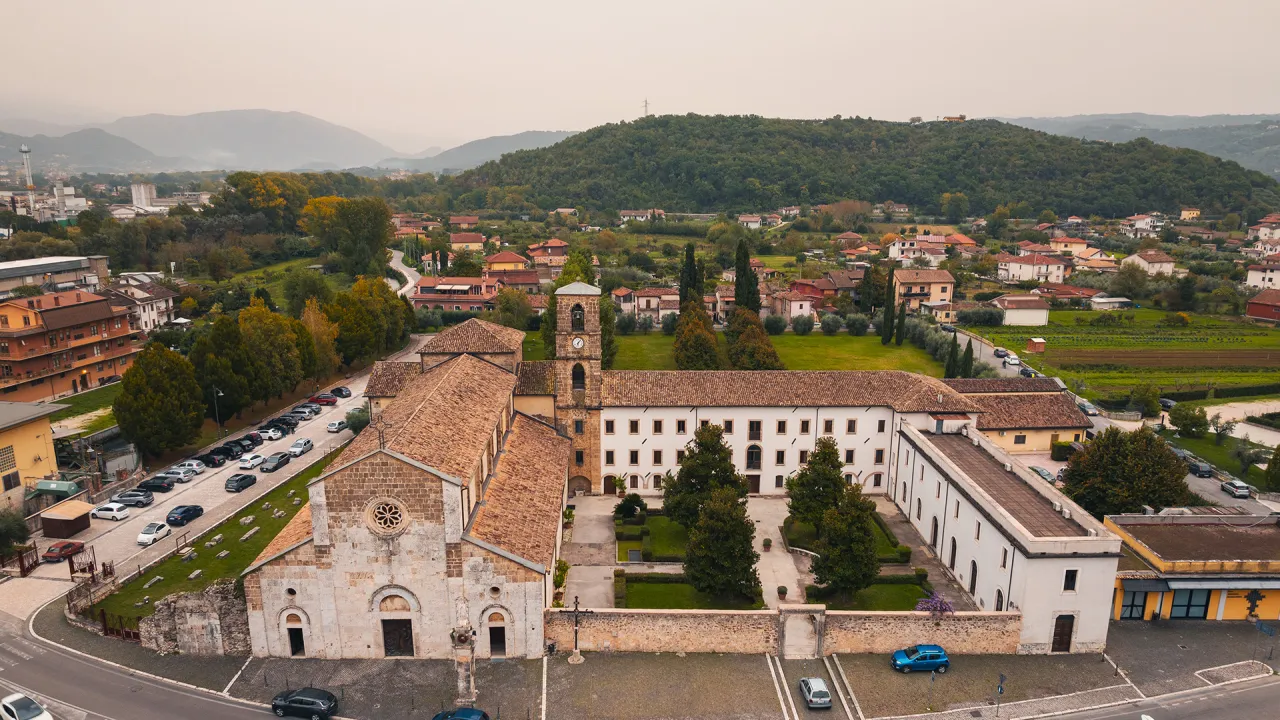
Tradition has it that the chamberlain of Sora and Arpino, Pietro, son of Rainerio, was inspired by the monk's sanctity and invited him to establish a monastery in the area of Sora inter formas, the area where the Liri and Fibreno rivers meet. In 1104, Pope Paschal II, returning from Apulia, stopped by the monastery and after canonizing the saint, consecrated the church to Mary and the same St. Dominic. However, the difficulties created for the monastery by the pressure from the local lords prompted Abbot Nicholas to appeal to Pope Innocent III (1198-1216) to reaffirm the abbey's privileges. In 1222, Pope Honorius III revoked its autonomy, uniting it with the church of San Silvestro at Casamari and replacing the Benedictines with the Cistercians. The abbey faced further challenges in 1229 when it was damaged in a fire ordered by Frederick II as punishment for Sora's alliance with the papacy. During the 14th century, chronicles describe a period of spiritual decline and abandonment, culminating in the abbey's closure for worship in 1653 by Pope Innocent X. In a renewed climate of spiritual fervour, the first restorations of the now dilapidated church were undertaken in 1682 under the papacy of Innocent XI. Later, in 1703 and 1706, under Pope Clement XI, the holy remains of St. Dominic were formally recognized.
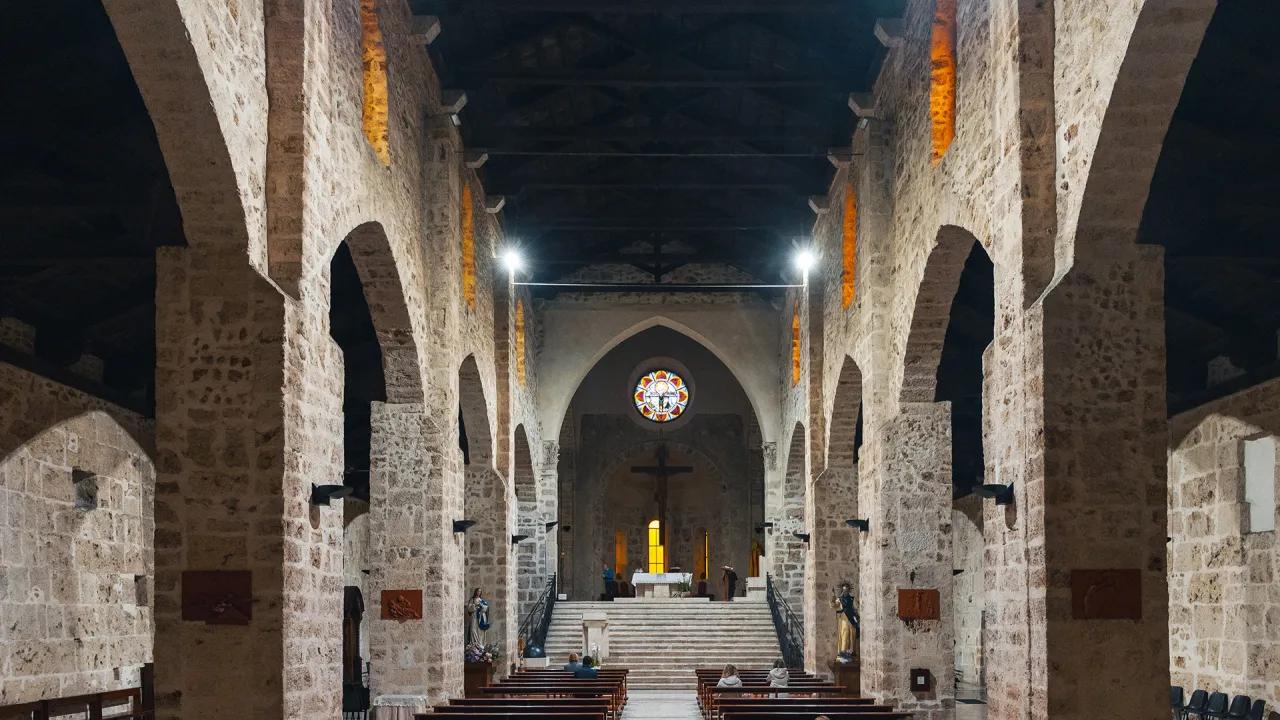
The church, however, did not resume its full function until the 19th century, thanks to restoration work initiated by Abbot Macario Baldelli. The restoration work, which lasted many years, affected several areas of the church: the entrance to the crypt; the central staircase leading to the presbytery, which was replaced with two lateral ones; the roof, which was covered with cross vaults and the facade. Additionally, the walls were enriched with some paintings and the altar was adorned with precious marbles. In 1870, after being seized by the Savoy State in 1860, the church was returned to the Cistercian monks and was solemnly reconsecrated in 1877.
However, in 1915, the abbey was severely damaged by an earthquake. Subsequent restoration work resulted in the construction of a new truss roof. The lateral staircases leading to the presbytery were relocated to the side aisles, leaving the central staircase completely free and the walls were also plastered in faux travertine.
In the early 1890s, the church was closed again for further restoration. This intervention gave the sacred building a more austere appearance, emphasizing the simplicity of the neo-Gothic style: the walls were stripped of their faux travertine plaster and the central staircase leading to the presbytery was reinstalled.
Beneath the presbytery lies the crypt, whose floor was decorated with opus sectile, has survived virtually unchanged throughout the various renovations. The crypt is divided into three naves by 16 bare columns. Today, the church has a basilica layout with three naves and three apses. The facade features a rose window, consisting of eight small columns arranged in a radial pattern. The three portals have jambs made of salvaged Roman-era materials.
PHOTO GALLERY

VIDEO


